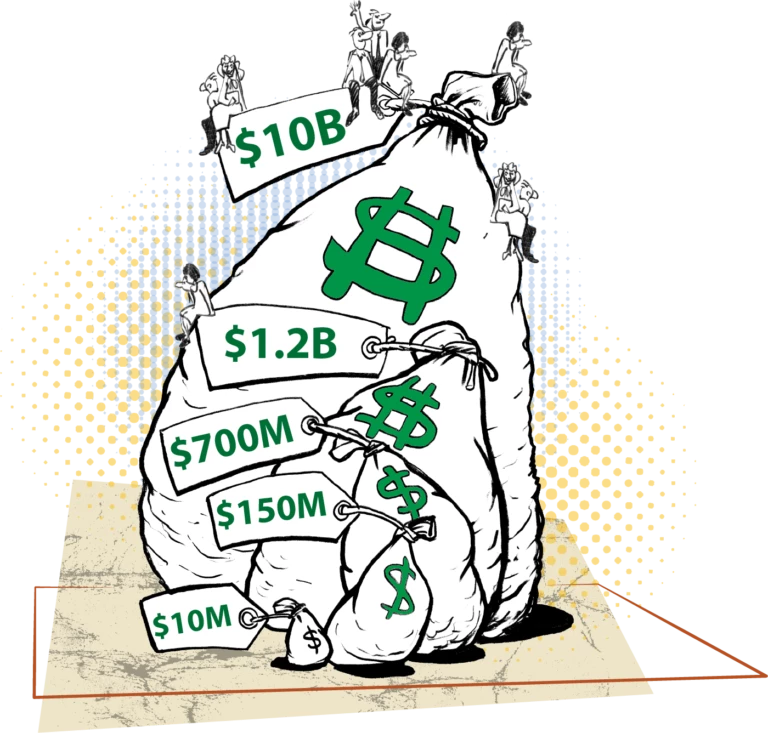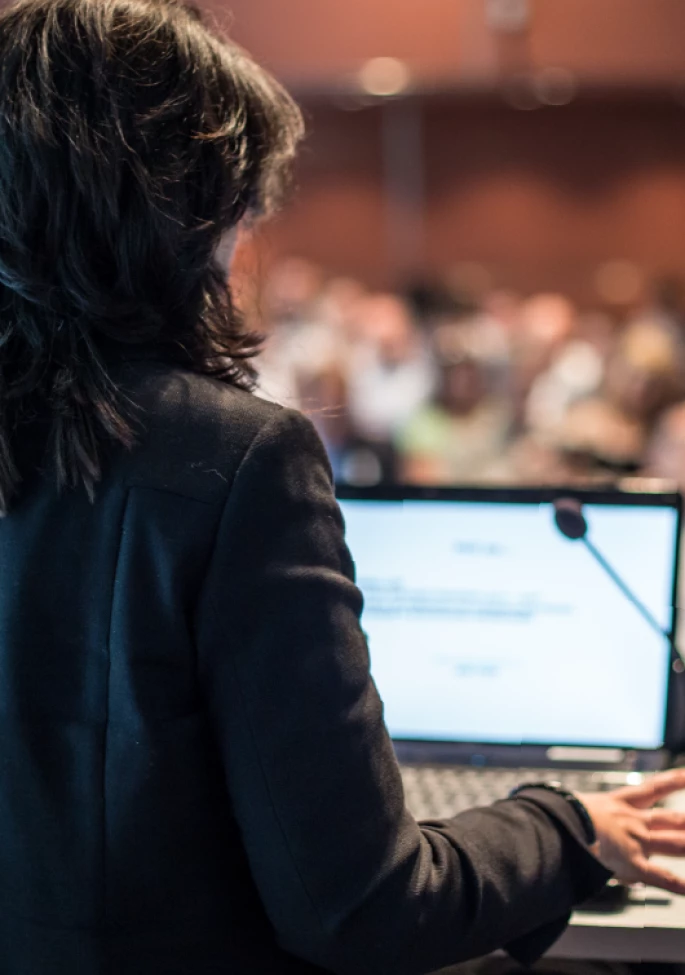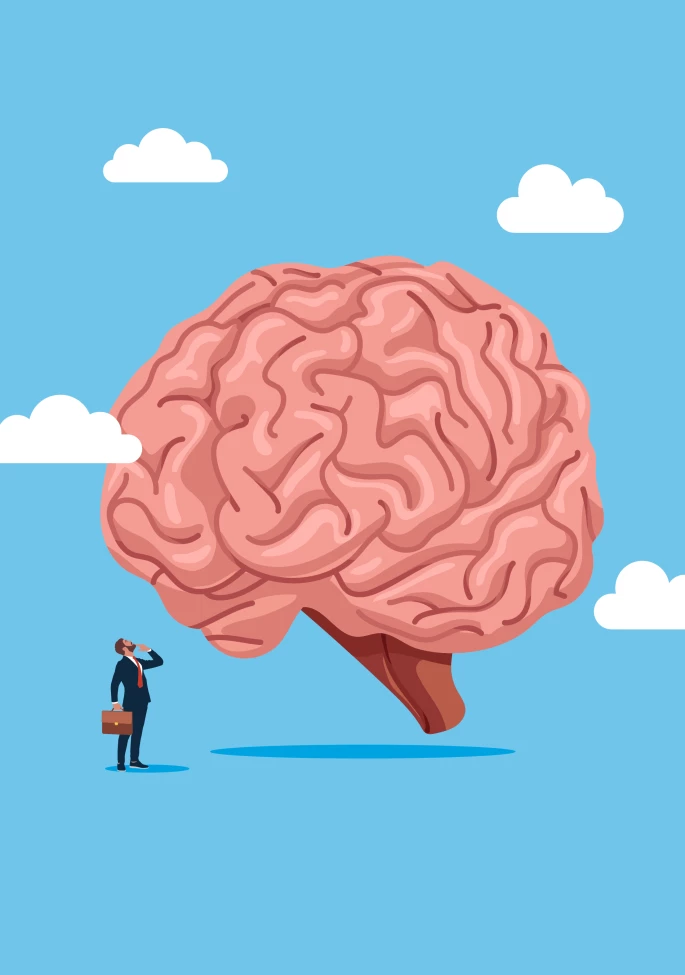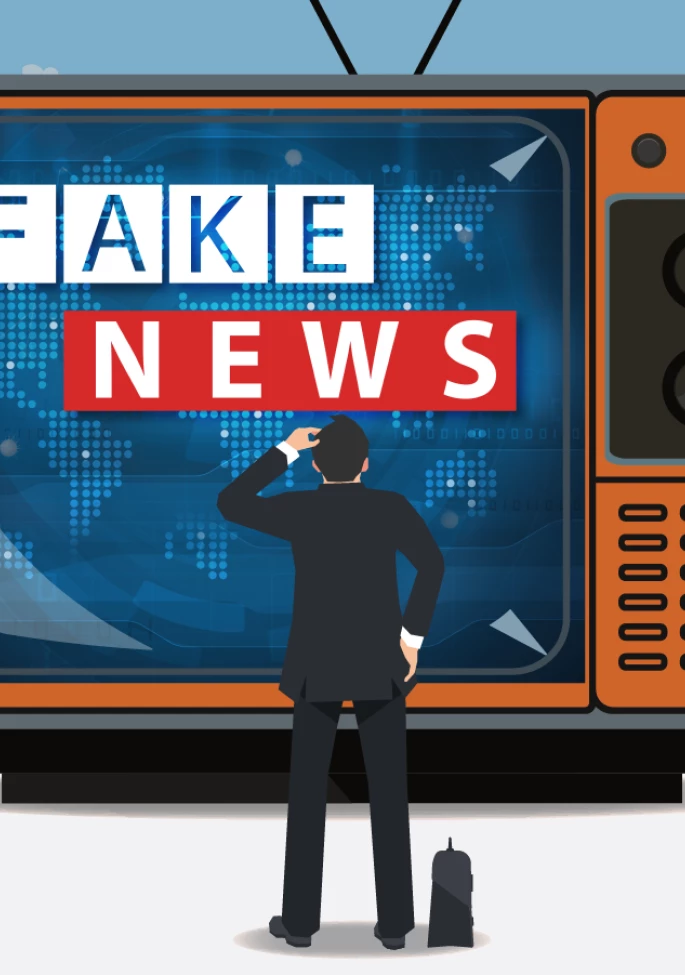In Part 1, we discussed the major narrative-framing strategies plaintiffs employ to coax jurors into awarding massive damages. However, a number of additional psychological and case-specific factors are at play, and these are just as important to keep in mind as you weigh the risks of encountering a nuclear verdict—and your potential counterstrategies.
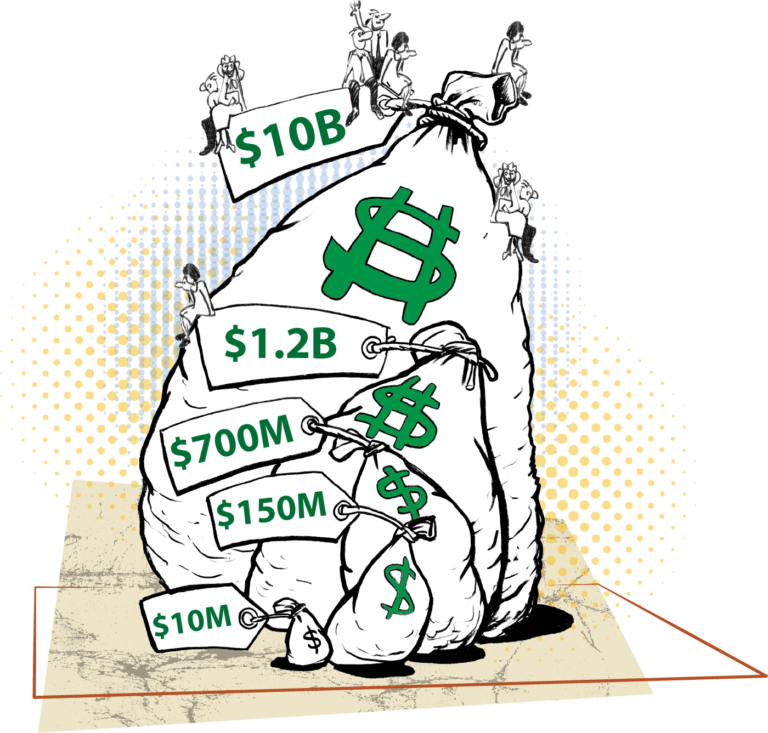
Illustration courtesy of IMS Senior Graphic Designer John Ilg.
Psychological Factors That Influence Nuclear Verdicts
Anchoring
The amount jurors award in damages, after finding for a plaintiff, is almost always influenced by the amount of the demand. In psychological terms, we call that “anchoring.”
Anchoring and adjustment are psychological heuristics, or shortcuts, that influence how people intuitively assess numerical estimates. People will start with a suggested reference point (i.e., “anchor”) and then make incremental adjustments based on additional information or assumptions. Academic research shows that these adjustments are usually insufficient, giving the initial anchor a great deal of influence over the final number.
The interesting part of this is that jurors can explicitly say that the plaintiff asked for too much money and have a negative reaction to the request, and yet still be affected implicitly by the anchor.
For example, if the plaintiff requests $50 million, jurors may think it is ridiculous and believe they are being tough on the plaintiff by awarding $20 million. But that is still a “nuclear verdict,” and eye-popping for many of us. In this situation, had the plaintiff’s attorney only requested $20 million, jurors may have made similar adjustments and settled on a figure far less than $20 million.
Most plaintiff lawyers realize this and “shoot for the moon,” knowing they’ll end up among the stars even if they miss the mark.
Psychology of Large Numbers
Another psychological principle that affects jurors’ damage awards is their ability to comprehend large numbers. The fact is that humans are terrible at fully understanding the difference between large numbers, such as millions versus billions.
This psychological principle is known as “scalar variability,” i.e., our ability to comprehend numbers decreases as the number increases.1 It’s often cited as the reason for why the U.S. debt is not an important issue to most Americans.
Similarly, awarding millions of dollars is not always a concern to jurors; unfortunately, people often lack the capacity to understand exactly how much money they are awarding when they reach a nuclear verdict.
Availability Heuristic
If you think about the verdicts you have heard about in the news, nuclear verdicts are probably what come to mind. Jurors tend to hear more about plaintiff verdicts with large damage awards, so these numbers are top of mind when they think about damages. This psychological phenomenon is known as the “availability” heuristic—a mental shortcut whereby people rely on immediate examples that come to mind when evaluating a topic.2
Oftentimes, mock jurors reference lawsuits they have heard about when discussing damages.
For example, one of the most iconic verdicts that older jurors draw upon is the McDonald’s hot coffee verdict. We often hear jurors say in deliberations, “We know what spilling hot coffee on yourself is worth, so this plaintiff’s injury is worth at least that amount.” And the discussion ends up starting at that new number. More recently, we see jurors mention current verdicts too: “Well that lady got $80 million from J&J for her cancer,” or “What’s the going rate of lawsuits these days? $50 million?”
This heuristic works hand in hand with the previous factors discussed above. The large numbers jurors recall from the media can reset the damages anchor to a higher amount, often leading jurors to remain in the higher echelons of the damage ranges. Then, because jurors can’t distinguish between these large numbers, the potential awards aren’t viewed as unreasonable.
And because defense verdicts don’t make headlines like nuclear verdicts, it’s essentially a vicious circle; jurors hear about large damage awards in the media, which inform their thinking when considering their verdict, which can then create more headlines.
Case-Specific Factors That Influence Nuclear Verdicts
Plaintiff's Age
Experience and our mock jury research over the years have shown what actuaries predict all the time: the younger the plaintiff, the more potential for high damages. For jurors, the younger plaintiff has missed out on their potential.
For instance, in a sexual harassment mock trial involving a small college, plaintiff-leaning jurors argued during the damages discussion, “Her PTSD will affect her the rest of her life; she has at least 40 years to live with this pain and trauma.” Knowing that they have one shot to provide for the plaintiff via their verdict, jurors often try to make that verdict count—one that helps take care of the person for the rest of his/her life.
Even in cases where a plaintiff’s injuries are likely temporary, we have seen in our research that most jurors are generally concerned by the small chance that those injuries could be permanent.
Knowing that the plaintiff has only one chance to receive money from the defendant, the jurors tend to award more money “just in case” the worst-case scenario comes to pass. Or, similarly, they will award money to pay for procedures the plaintiff may not currently need, based on the small possibility that they might become needed. Add numerous years’ worth of pain and suffering damages to that, and the verdict inflates even more.
Number of Plaintiffs
More plaintiffs in a case can significantly increase damage awards. This can happen for a few reasons.
First, when there are multiple plaintiffs, each individual plaintiff’s claim becomes more credible. When considering one plaintiff’s claim among many, jurors assume that if it happened to other people, it also likely happened to this plaintiff. Next, multiple plaintiffs with similar claims can show a pattern of bad behavior. When there is a case involving only one plaintiff, jurors might believe that it was an isolated incident—but gaining the impression that each plaintiff is one instance of a bigger problem can drive up damages. Lastly, jurors can struggle to discern between causes and injuries among the various plaintiffs, which can lead to broader conclusions and larger damages.3
Taking this problem to its extreme is today’s mass tort litigation. Modern mass tort, and particularly multidistrict litigation (MDL), has become a machine for cranking out massive verdicts—for a couple of unique reasons:
- In contrast to your average torts of the past, many of today’s mass torts involve common, over-the-counter products like talcum powder or Roundup®, creating a massive pool of potential clients for plaintiff firms to advertise to.
What’s more, there’s often no real paper trail to substantiate the claims; instead, many of these cases are based on plaintiffs’ vague assertions of “usage.” Do we know for a fact a plaintiff used the product in question? How often? Where once it was a matter of, “Did the person have this breast implant, yes or no?” or “Was the person on the plane that crashed, yes or no?” we’re left instead with largely unverifiable claims.
- With multidistrict litigation—and the help of funding from litigation investors—plaintiff firms have an economical means to saturate local media and social media channels with pro-plaintiff propaganda.
Not only do firms use these advertisements to recruit clients, but they simultaneously inundate potential jurors with what are essentially truncated plaintiff opening statements. Frequently, they play to jurors’ confirmation bias, in that jurors may weigh the plaintiff case evidence more strongly as a means to confirm the predispositions created by their media exposure.
They also often feed the Availability Heuristic (discussed above) by referencing previous large verdicts. The end result is a greatly increased likelihood of bias among the jury pool. And dangerously, it is often implicit bias the jurors aren’t even aware of—making it very difficult to weed out in jury selection.
Plaintiff-Like Witnesses
“Me too” witnesses can have an effect similar to the above. When the plaintiff brings in employees, students, or any others who have faced an experience like the plaintiff’s claim, it bolsters the plaintiff’s credibility.
As they say, there is strength in numbers. Such witnesses can also be used to encourage punitive damages by bolstering the argument of repeated misconduct.
Final Thoughts
Psychological factors and recent trends are stacking the odds toward nuclear verdicts. Unfortunately, large organizations are generally the ones finding themselves on the receiving end.
As a result, the stakes of litigation are higher than ever, and defendants need to make special considerations and preparations to minimize the chances of such outcomes. It’s important to identify your case’s risks—including the facts, details, witnesses, and biases that increase or decrease your client’s exposure.
Although the possibility of a high damage award can never be eliminated completely, it can be minimized by using the results of valid research to plan ahead.
There are a variety of resources and jury consulting services available to help inform you of your vulnerabilities and the strategies you might take to overcome them. Because the Reptile Strategy is such a crucial element in drumming up nuclear verdicts, we recommend learning more about the plaintiff’s Reptile Strategy, but also how the defense can reverse it for use against the plaintiff.
Reach out to IMS to discuss your case and learn how we can help you make informed strategic decisions.
A version of this article was first published for the National Association of College and University Attorneys Virtual Conference in June 2020.
References
1 Bell, C. (2014, February 7). How Big Numbers Short-Circuit Your Brain and Your Finances. Life Hacker. https://lifehacker.com/how-big-numbers-short-circuit-your-brain-and-your-finan-1518166831
2 Tversky, Amos; Kahneman, Daniel (1973). Availability: A heuristic for judging frequency and probability. Cognitive Psychology, 5(2): 207–232.
3 Greene, E., & Bornstein, B.H. (2003). Determining Damages: The Psychology of Jury Awards. Washington, DC: American Psychological Association.

